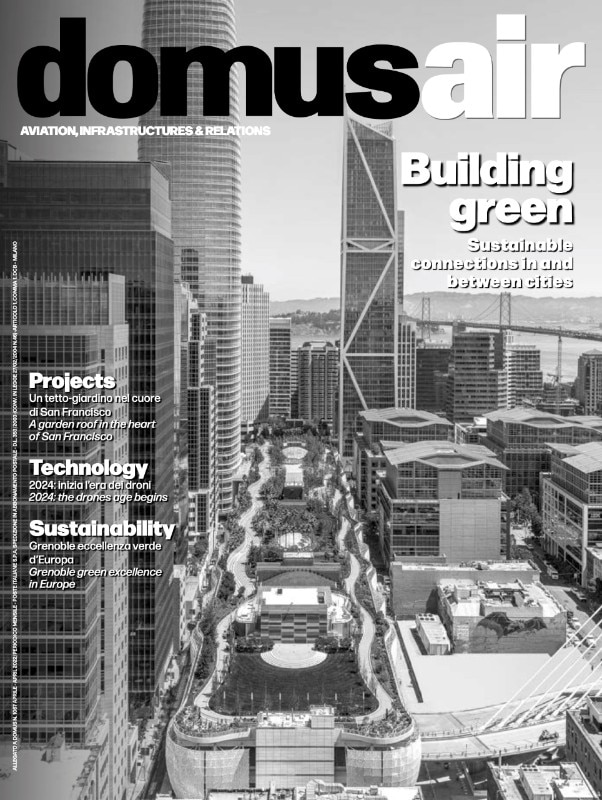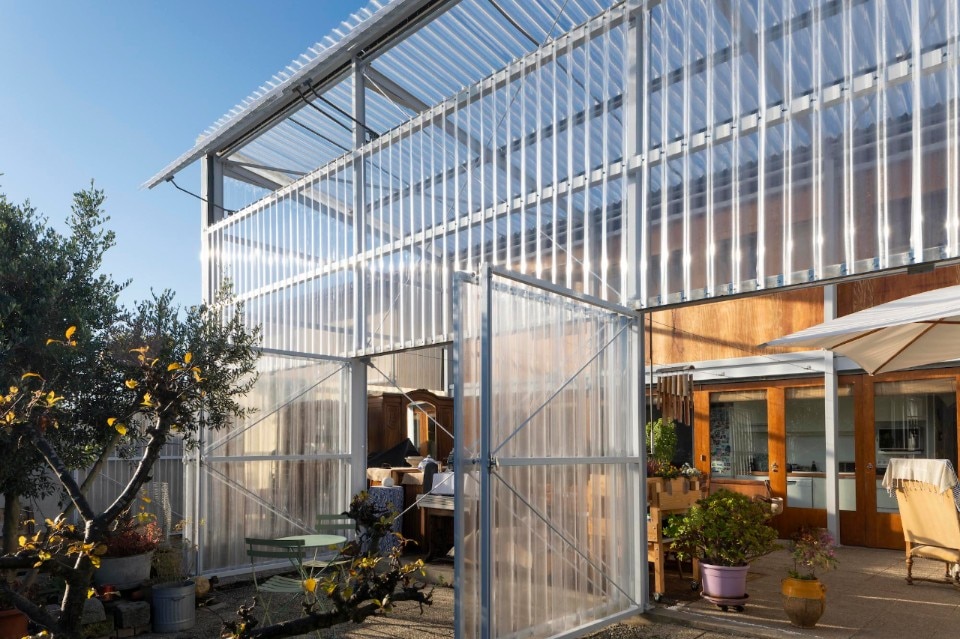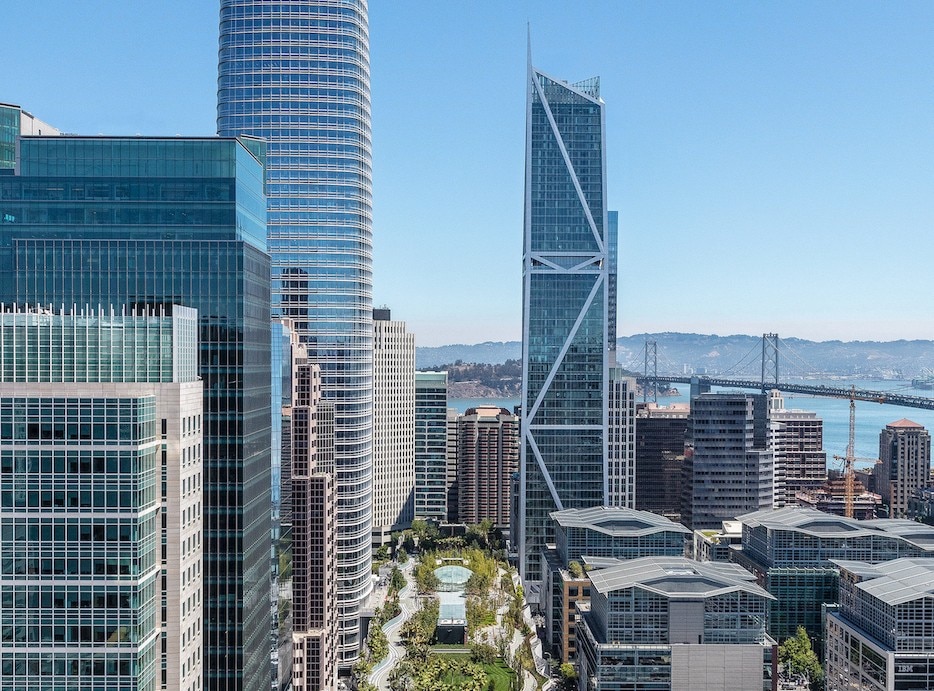The April issue of Domus 1067 focuses on the sphere of living. The magazine is opened by Guest Editor 2022 Jean Nouvel, who in his Editorial, explains how designing for the new housing needs of big cities must be the mission and social role of architects. “Living is choosing the place, or places, where you will live based on an affinity, a desire, first from a geographical point of view and then from a sensory one. It is to organize one’s own wellbeing, to mark the space with one’s own imprint, to adapt it, to make it an expression of ourselves and of those who live with us”.
Next in the Essays, Spanish researcher Javier Arpa Fernández analyses the experience of Paris Habitat, thanks to which the presence of more than 110,000 homes in the French capital is one of the most important examples of a strategy for ensuring social cohesion on an urban scale. While housing prices are rising, this heritage houses a diverse population and encourages us to believe that life in the city is not the privilege of a few. This is followed by an article by Anthony Fontenot, who writes about the work of Gregory Air, an American pioneer of modern social housing.

The first part of the Architecture section is dedicated to the work of Anne Lacaton and Jean Phillippe Vassal, and opens with an essay by Massimo Faiferri, for whom “the residential projects present a lesson in humility, seriousness and intelligence, working for small movements”. The first project covered dates back to 1993: Maison Latapie in Floirac, a low-cost residential project resulting from a low-budget commission to build a home for a couple with two children. Cité manifeste and Neppert Gardens followed this in Mulhouse, projects centered on the inhabitants' quality of life. La Chesnaie in Saint-Nazaire is a double transformation and densification operation, part of the Ville-Ouest urban renewal. Finally, the project for Grand Parc in Bordeaux involves the transformation of three already inhabited council houses.
The section continues with Escobedo Soliz’s renovation project in Mexico City: the modernization of a unit in a 1940s social housing complex, resolving a lack of privacy and service spaces. We return to Paris with the La Ferme du Rail project, a solidarity-based proximity service-producing integration through urban agriculture located on a historic railway line. Studio Bua transforms an abandoned concrete barn in the Icelandic countryside into a studio dwelling bathed in light. Here the natural elements and the pre-existing structure are the subjects of the new project. Finally, Stera Architectures combines the recovery of an eighteenth-century palace with a contemporary extension by designing an intergenerational and supportive residence for the elderly and students.
The pages dedicated to Art focus on the photographs of artist Antoine d’Agata, who, thanks to thermal technology, has created a visual language that has enabled him to capture the sensory, political, and existential reality on the eve of the lockdown. For Design, Domitilla Dardi describes Konstantin Grcic’s new collection. The German designer’s new products are different in type: a stool, a toolbox, an electric vehicle for transporting goods, a construction module for walls. However, all of them provide the only possible response to the crisis: they are concrete objects, functional tools, and means of reconstruction.

The issue closes with a final reflection by Juli Capella, a letter in response to the manifesto “Spirit, where are you?” written by Jean Nouvel for Domus 1063. “A good architect rests on two legs: one is theory, the other practice,” explains the Spanish architect.” To walk, he has to use both legs, but moving them in the same direction and at the same time, not separately. If he only uses one, he will stride from his path and get lost, heading towards a precipice or a steep slope. On the other hand, if he uses both of them well, he will get far without any problems.
This month’s Diario, pages dedicated to current affairs, opens with the section Points of view, where Gerald Böse, president and CEO of Koelnmesse, and Maria Porro, president of Salone del Mobile.Milano discusses the future of trade fairs after two years of the pandemic. Ken Farris writes for Opinions about the paradox of Henri Labrouste’s bridge. Designed to link Italy and France, it offers an opportunity to reflect on the symbol of the bridge as a monument to the ideals of transnational diplomacy. Antonio Armano focuses on the history of RadiciGroup, a manufacturer of technopolymers that has grown from a family business to its current 3,000 employees worldwide. For the column Others’ houses, writer Andrea Bajani tells of a flat in Rome: between the suitcases ready at the entrance and the bottle of his newborn son in the kitchen come the verses of L’amore viene prima.
Walter Mariotti, Editorial Director of Domus, closes with a dialogue with Eric Breitung, director of the Preventive Conservation Science Laboratory of the Metropolitan Museum of Art’s Scientific Research Department.

Attached to this double issue, the second number of DomusAir, a special dedicated entirely to transportation and connections of the post-Covid era. The focus of the issue is “The sustainable connections in and between cities” and is divided into 5 sections: Hot Tips, topics, ideas and people at the forefront of the field of transport and aviation; Projects, ongoing projects for stations, airports and bridges around the world; Technology, or digital innovation as an engine of change, drones and hydrogen-powered trains; Sustainability, on the global impact of interconnections; and finally Take Off, an essay by Giulio De Carli on the construction of the infrastructures of the future.






























